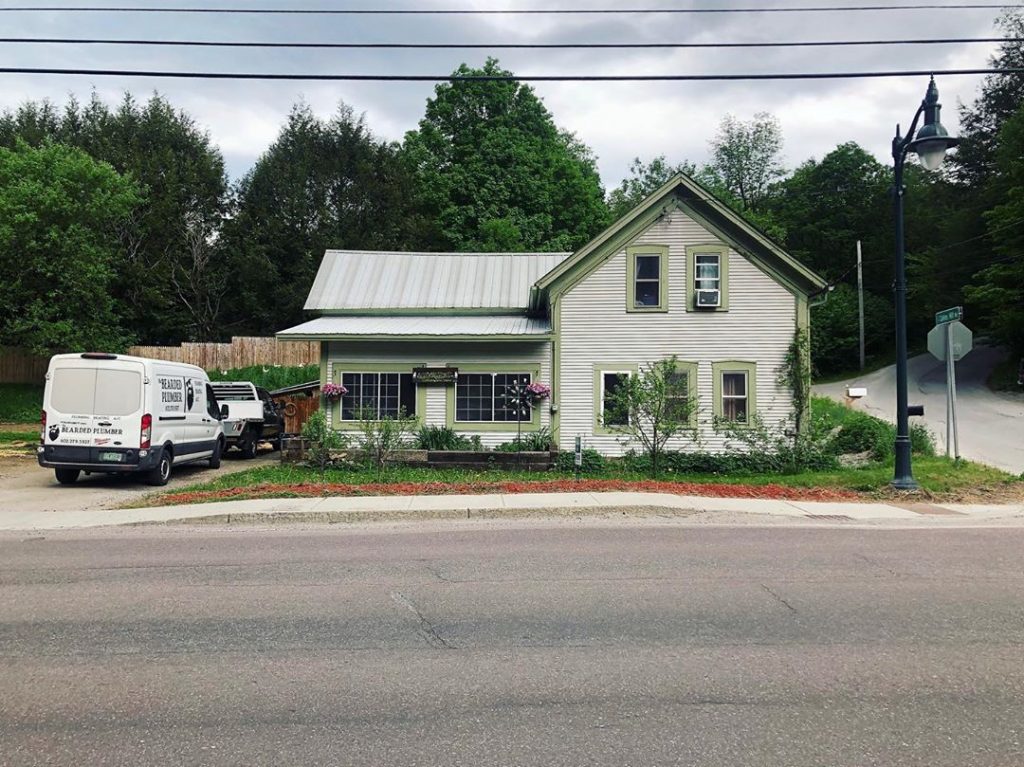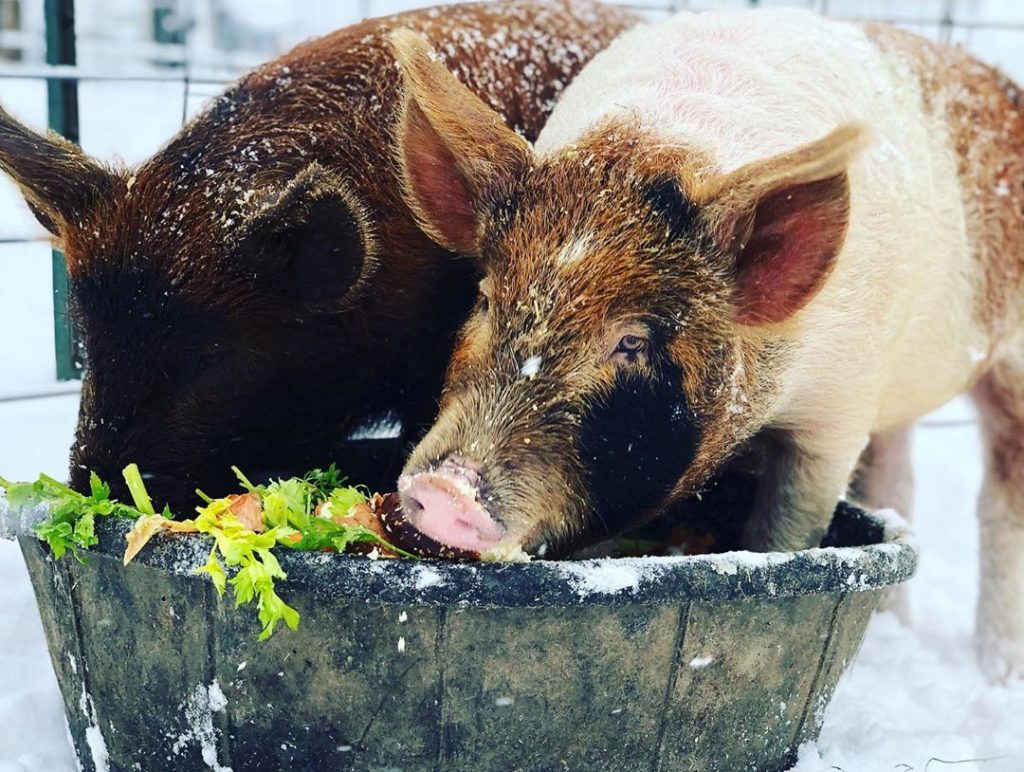
Deeply Rooted
I am not well traveled. I’ve never flown on a plane. I’ve never been north of Ohio or west of Texas.I’m not as well traveled as some may say one should be, but this piece of land has housed all of my fondest memories…




Good morning from magical northern Vermont! Let me introduce myself, I’m Eliza, also known as @farmer_jane , mama of the Farmettes and cofounder of East Village Farm. We over the last 7 years have turned our .23 of an acre, village corner lot, into a fully functioning, sustainable urban micro homestead. Wow, that’s a mouthful but we believe in our motto, Small Scale, Big Results. We have cultivated gardens, orchards, rotational grazing and for the last 3 years, raised all the meat our family of 4 consumes. Huge accomplishment!
Over the years livestock such as goats, pigs, sheep, rabbits, ducks, quail, geese and chickens have roamed our property. We ultimate settled on goats, rabbits, ducks and winter pigs. Our goat herd even provided us with a very successful artisan handcrafted goat milk caramel business! I keep saying we because my daughters, Iyla 10 and Emmelia almost 13, work every bit as much as I, they are my driving force to do more and do better. I cannot wait to share more with you over the next few days. Feel free to toss all things micro farm at us, we love questions.
So you want to be an urban micro homesteader? Our advice, START SLOW! It’s easy to get swept up in big homestead dreams, but there is a steep learning curve. We started homesteading 7 years ago, with 6 laying hens. Hens turned into ducks, then rabbits, then goats, sheep quail and pigs! Oye! Bigger gardens, more fruiting trees, and medicines. Sometimes learning those tough lessons is the best way to get exactly where you want to be. So pick what you want to start with and get good at it, next season, add something new. Each time becoming the expert as you learn. Our failures in micro homesteading have taught us more value than our successes!
Enjoy some snapshots of our livestock and see in the last image how everything pieces together. Please know that not everything grows or lives in its location year-round, we have lots of seasonal crops. Like the pigs over the garden in the winter. Also, before you get started, checking with your town ordinances and zoning is a must!



When I talk to people about sustainability and raising our own food, people are always first turned off that my protein of choice is rabbit! But how can you raise and eat something so cute and adorable??? To that I answer, piglets are cute, cows are cute, lambs are cute…
We decided to take rabbits on full force for a number of reasons, first being that our lot is very small and raising livestock takes room, but rabbits allowed us to add vertical growing to our lot. All our cages and pens are suspended off the ground, so we were utilizing space. Secondly, rabbits can be raised start to finish by myself and the Farmettes. There isn’t a lot of intense pasture work, building cages is very simple, they consume almost all our garden weeds, plus their poop is magical and we could process them, on site ourselves. No need for a tractor or butcher to come to us. Rabbits also grow incredibly fast, they are table ready in 8-12 weeks. They require less water and feed per pound than beef and have the highest meat to bone ratio. It is also the most easily digestible protein our bodies consume.
Don’t be fooled by their big ears and twitching noses, rabbits aren’t always sweet. They have massive hind legs, with talon sharp toenails, we are constantly battle rabbit scratches and even the occasional bite! They have no nonsense attitudes and can be cage aggressive at times. Should I mention the impeccable aim for spraying urine?… Not only is our herd of 4 does and 1 buck producing 114 offspring for our freezer, from March to October, but they leave you with the most gorgeous pelts. The Farmettes are set on having rabbit fur blankets come this winter!
In conclusion, we highly recommend rabbits for any homestead or even backyard hobbits, even as a pet to utilize their poop for flower or veggie gardens. They are the complete package when talking about your future in sustainability.




I am not well traveled. I’ve never flown on a plane. I’ve never been north of Ohio or west of Texas.I’m not as well traveled as some may say one should be, but this piece of land has housed all of my fondest memories…

Do you ever worry that your kids will miss out because of this homesteading lifestyle choice? This fear crosses my mind time to time. I’m sure many, if not most of you, could agree that it can be extremely difficult to get extended time away from the homestead for more than a full day, especially in the busy summer months when daily chores demand our regular attention…

“In some Native languages the term for plants translates to ‘those who take care of us’ … the land knows you, even when you are lost.” – Robin Wall Kimmerer, Braiding Sweetgrass…

Babies, Business, and Bumper Crops: How I am Learning to Homestead with Babies in Tow
Have you ever had one of those days? You know the days when you are cleaning the baby’s diaper, milking the cow, scooping poop in the barn, wiping noses, and cleaning more poop off of kids’ shoes…

Hey there, Homesteading Mama’s!
I’m Rachel from @frontier_homesteading. My husband Ryan, three children and I have been homesteading for about 10 years now, first in Wyoming and now in Alaska.
We currently have milk goats, pack goats, sheep, a pig, a cow, chickens, rabbits, bees and a dog. Seasonally, we also have more pigs, meat chickens and turkeys….


Stained glass windows date back to the 7th century. With the earliest known reference dating
from 675 AD when workmen were imported from France to Britain to Glaze the windows of a
monastery…

Homesteading and growing food is not the easy way out of this life, i would say it is the hard way as there’s nothing convenient about it. It’s a lifestyle, a life change not a trend or hobby. Well, that’s my opinion any way…

Awakino Station is a child’s dream. There is the river to splash in, tussock covered hills to explore, animals to raise and a bustling kitchen with a baking tin full of something yummy to eat…